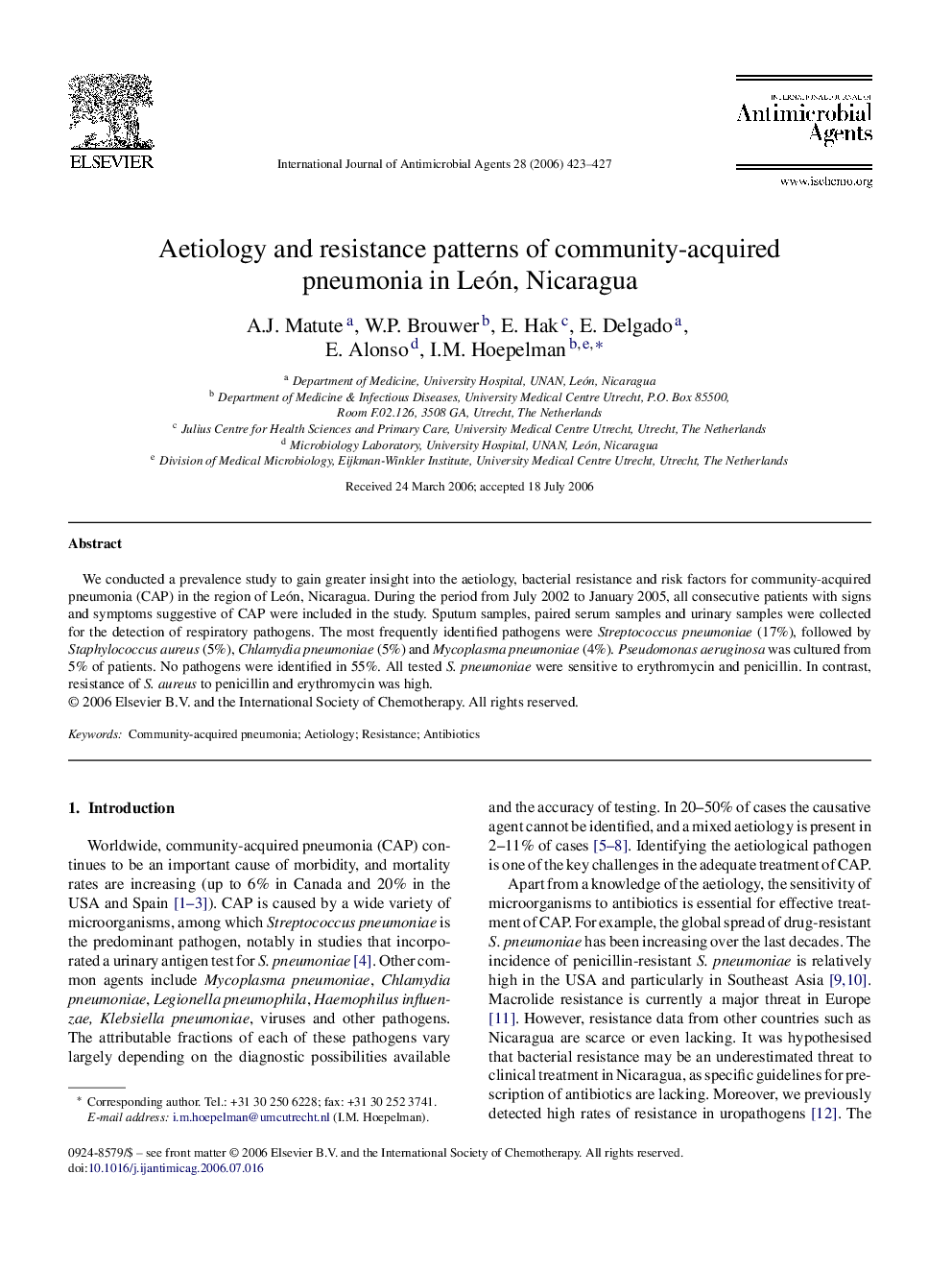| Article ID | Journal | Published Year | Pages | File Type |
|---|---|---|---|---|
| 3361241 | International Journal of Antimicrobial Agents | 2006 | 5 Pages |
We conducted a prevalence study to gain greater insight into the aetiology, bacterial resistance and risk factors for community-acquired pneumonia (CAP) in the region of León, Nicaragua. During the period from July 2002 to January 2005, all consecutive patients with signs and symptoms suggestive of CAP were included in the study. Sputum samples, paired serum samples and urinary samples were collected for the detection of respiratory pathogens. The most frequently identified pathogens were Streptococcus pneumoniae (17%), followed by Staphylococcus aureus (5%), Chlamydia pneumoniae (5%) and Mycoplasma pneumoniae (4%). Pseudomonas aeruginosa was cultured from 5% of patients. No pathogens were identified in 55%. All tested S. pneumoniae were sensitive to erythromycin and penicillin. In contrast, resistance of S. aureus to penicillin and erythromycin was high.
